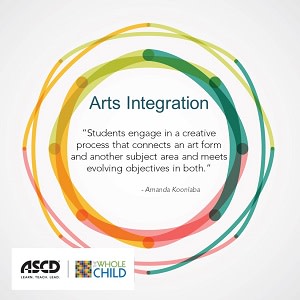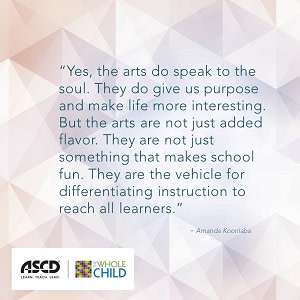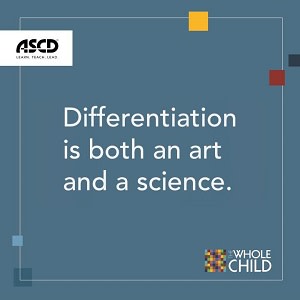As the school support teacher and reading specialist in a large urban International Baccalaureate (IB) high school, I collaborate with teachers to assist with and support their lesson planning and classroom teaching. While my background is in literacy, I don’t confine myself to the English department or the social studies department. I support all content areas and disciplines to help create comprehensive literacy programs throughout the school.
Recently Mr. Chad Sperzel-Wuchterl, the art department chairperson, and I were discussing writing and what writing looks like in an IB art program. As we enjoyed bagels and juice one morning, I listened as he passionately described the writing tasks his students had completed and how those tasks were connected to the bigger picture of making and living art. He wanted his students to have the sophisticated writing skills necessary to share their love of art and explain to others what that love meant to them.
As he explained the rubrics, writing guides, and culturally responsive lessons, I thought about how those writing resources might look in another subject; say for instance, math. As most teachers do, Mr. Chad teaches the way he wanted to be taught. When he was a student, he had a difficult time sitting in a chair behind a desk; he wanted to be doing, creating, and exploring. So, I posed the question: If you were a math teacher, how would you teach math? As he spoke, the same kind of passion that had encompassed our earlier conversation became evident again.
Students would be surrounded by examples and samples. They would see models of exemplars so that they could check their own and feel confident that eventually, they would also be able to create exemplars.
Students would sit in pods, not individual desks. They would collaborate and use each other as resources, but individual accountability would still be expected. Within those pods, students would be working on individual problems, but all students would be focused on a single mathematical concept.
Students would teach students. Those that “got it” would teach those that didn’t. Students would facilitate 80 percent of the class and the teacher would conference with students one-on-one as often as possible.
I grabbed my pen and began to write. Mr. Chad was on a roll, and what he was saying made a lot of sense. He continued:
The class wouldn’t revolve so much around formulas, but rather around presentations. Students would be expected to show how and why the problem “works,” not necessarily focusing on the formula showing the work. They would be expected to illustrate various ways to solve problems instead of relying on the “only” way.
Students would demonstrate how math creates something. If students are not going to be math teachers, have them look up their career choices and research how they will use math in their future occupations. They could also explain how to apply math to build a chair, demonstrate how to use math to fix a faucet, or determine appropriate mathematical formulas to indicate motion.
They would stop writing about word problems, and instead answer these questions: How would you teach the word problem? How would you use the word problem? What is its value to you?
Finally, Chad took a breath. I finished up my list of his thoughts and processed what I had written. Then he added one more thing: Students would be expected to reflect on and explain what they understood and didn’t understand every day.
That’s how Mr. Chad would teach math. Finishing my bagel and juice, I asked if I could share his ideas with other teachers. “Go ahead,” he said. “I’m not sure how many teachers would find it useful, but that’s what I think.”
Doing, creating, and exploring—these are not abstract terms meant to be dusted off for occasional use by our students. Doing, creating, and exploring are examples of optimism meant to engage students in all content areas with such passion that they don’t want to do anything else but learn. Useful? How about hopeful that one day, we’ll use these suggestions, make them our own, and watch as our students do, create, and explore their best selves.
Peg Grafwallner, M.Ed., is an Instructional Coach/Reading Specialist at a large urban school in Milwaukee, WI. As an English teacher, at-risk educator and reading specialist, Peg has taught advanced English and developing readers. Currently, Peg models, coaches and assists teachers in creating comprehensive literacy lessons meant to enhance skill-building; in addition to providing instructional support to teachers district-wide. Peg is a blogger, author, and national presenter with articles appearing in ASCD, Edutopia, Exceptional Parent, Literacy Daily, Literacy and NCTE and the WSRA Journal. Peg can be reached at peggrafwallner@hotmail.com or at https://peggrafwallner.com.








